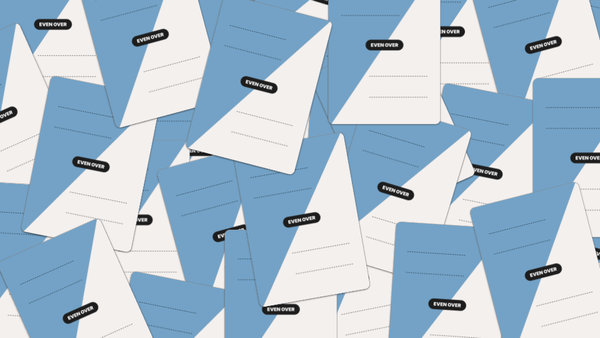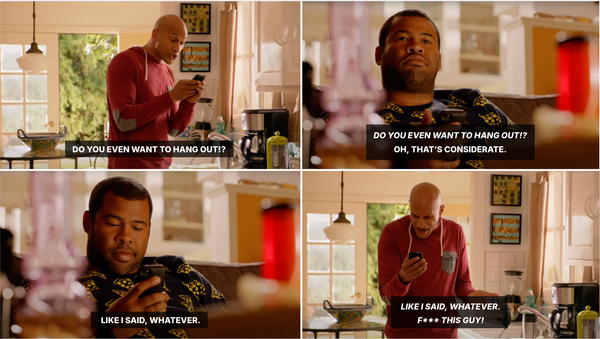Keep Calm and Hybrid On
Adopt a five-element framework for successful hybrid work: clarity with explicit rules, suitable physical/digital spaces, a humane culture, focus on deep work, and continuous improvement driven by data.

Let’s go back a bit, to the middle of quarantine. A very tough time for all. But a moment that gave everyone who could do their work from home the opportunity to give it a good try. For most marketing teams and their partners, this meant that everyone from the interns on up was Zooming, Slacking, and Google Driving (or Teamsing) their way through every working day.
The benefits were obvious. Ability to schedule work on your own time. No time and energy lost to commuting. Hire the best, regardless of where they live. Work for the best, regardless of where you live. Potentially less time wasted on BS meetings. More time focused on actually doing the work. Potential for everyone to focus on outputs rather than hours spent. More opportunities for underrepresented folks to perform and succeed, without the impediments of bias or missing social networks.
And despite the hand-wringing about people slacking off, it turned out we were as productive or more than we were when we were in the office. McKinsey’s American Opportunity Survey found that “when people have the chance to work flexibly, 87 percent of them take it.
But there were downsides. Some of these downsides have been felt forever, especially by people working in global roles, or those who work in professional services (i.e. agencies and consultancies). When there isn’t a natural barrier between work and home, it’s harder to separate either from the other. Calls that might have been pushed to the next morning can be scheduled at nearly any time. Living outside the timezone of the HQ means getting up early, staying up late, or both. If you lack the money or space to have a proper office, it’s likely that you’re working in less-than-ideal conditions.
And for many kinds of work, especially the kind that requires group problem solving and high-quality team interactions…remote is just plain harder. It can be lonely, too. Most of us will agree that the social bonds formed around challenging work are part of the thing that drives not just satisfaction, but long-term success.
So it’s unsurprising that those who sign checks to real-estate companies for their large corporate offices, those who benefit most from in-person interactions (not just junior employees) and/or the conferred status of the office environment (not just the most senior execs) would want to bring everyone back.
But both office-only and remote-only camps have it wrong. We need both modes of work, and we need to change in order to navigate the new, hybrid world.
(A bonus: nobody is doing this well, yet. So marketing teams that pull off this transition will differentiate both in terms of talent and in terms of results.)
We see a five-element framework emerging for successful hybrid setups: Clarity, Space, Humanity, Focus, and Improvement.
Clarity
- Job descriptions are not enough. Write down your expectations for each of your direct reports, and review them. Write rules of engagement for your team (engage your leaders in this work), and sit with each team to give them a chance to contribute/discuss how they might bring the rules to life.
- Set and stick to expectations around working hours and availability. Focus this time on a 2-3 hour window that works for all time zones. This will make your in-office time more effective, too. (If rules vary by department, team, or level, communicate it as such to leave less up for interpretation and assumptions.)
- Set high standards for inclusion of remote and in-office teammates. Make sure everyone can be heard and seen, if that’s the goal. Give many options, both for participation and for catching-up.
Space (Physical & Digital)
- Space to work is as important as space to not work. Build shared downtime into the company rhythm (all of August? One week every four months? Evenings between 7-9pm?).
- Reconfigure office space to allow for individual focus that folks might not get at home — think “productivity caves,” not open offices.
- Reconfigure office space to allow for intensive group work. Many screens, boards, and cameras per room. High top tables, not boardroom setups. Easy places to break out in small groups and connect.
Humanity
- Do not penalize folks implicitly or explicitly when they operate according to the rules you set.
- For folks working from home: understand that there will be side conversations and some loss of signal. (But we should work together to minimize FOMO by documenting and sharing important decisions.)
- For folks working from the office: understand that your remote colleagues are navigating in-home distractions.
- Use this as a chance to level-up your 1:1 capability. Check-in with directs, peers, leaders, and partners on a set cadence. Keep an agenda for 1:1s focused on their growth.
Focus
- Coach your teams and direct reports to structure their days to optimize for deep work AND for admin work.
- Audit calendars periodically to see if teams and individuals are stuck in focus-draining back-to-back calls.
- Consider the work to be done. Media planning and buying needs heads-down time and a good phone connection. Visual and verbal design need heads-down time, but with convenient ways for leaders to pop-in to push the work, and shared spaces for group critiques. Account work works best when multiple managers can quickly connect without having to schedule a meeting. All of the above can be done in an office, or with remote tools.
Improvement
- Stick to the rules you set. When you learn that they’re not serving you and your team anymore, change them with data. Communicate the change to all. Don’t settle for ambiguity or the status quo.
- Don’t be afraid of some considered turnover. The guidelines you create for your department will not be everyone’s favorite. If you’ve followed the steps above, you’ll likely have built a high-functioning, hybrid marketing workplace, and the benefits will come to those who stay, and those you recruit.




